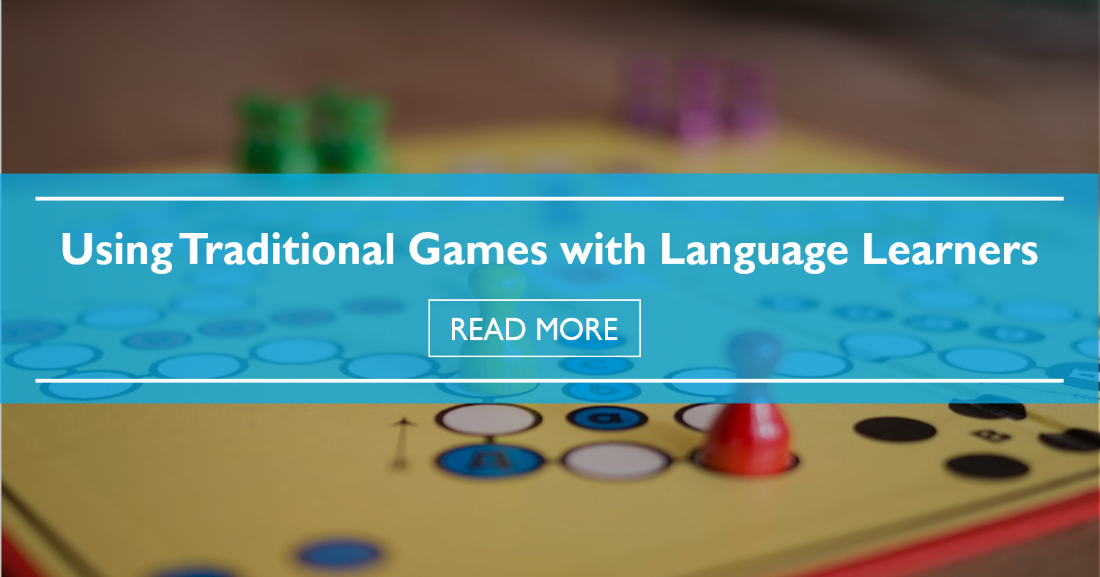Using Traditional Games with Language Learners


The simple equation of joystick plus imagination forever changed entertainment and how young people (and old) spend their free time. Though teachers may not be motivated to bring games from that era into the language classroom, games like Pong or Pitfall, today’s games can be a benefit to language learning you may not want to turn down. In fact, using video games in the ESL classroom can promote language learning and fluency if you choose the right games and use them the right way.
Here are several reasons for you to bring video games into your classroom to help your students and their language learning.

Playing games is a great motivator for your students. For those who participate and show success in the classroom, video games can be used as a reward, but that is not all that they are good for. When students engage with a video game, they use a different set of learning skills than they do with traditional classroom learning. Video games often give visual as well as auditory feedback while still engaging the kinesthetic learner. Kinesthetic learners can often have a harder time with language learning since so much of language is verbal or visual. By engaging them with the material in the context of a game, these learners will connect with language in a new and different way and see successful learning as a result.
You can use games in the ESL classroom for conversation activities, too. A game such as Sim City can be very useful in the ESL classroom if you require your students to work in groups as they play. Planning a strategy in groups will keep your students entertained and engaged and will also require them to talk to one another as they plan. If you are not familiar with the game Sim City, players create their own town, planning the layout of a city and all the support services that the city will need. The more strategic a player is when building the city, the more successful his city will be. When you use a game such as this in the ESL classroom, it can be a natural fit for group discussion practice. By assigning several students to design one city, they will have to discuss the strategy they will use for their city. Not only that, they will also have to problem solve when issues come up that the city planners must address. While they are doing all this group discussion, your students will be having fun and practicing their speaking and listening skills.
You can also extend this type of activity by asking each student to write a summary of his group’s strategy for the project. You will want to have your students include what they contributed to the strategy and what they thought was good and bad about the plan as well as what they would change if they were planning independently.
Video games have become so popular with young people (and those not so young, too) that you can find games on just about any topic you are looking for. If you are an ESL teacher that is also teaching content areas, you may find that presenting the information in a video game rather than a traditional lecture or typical format, may make that information more accessible to your students. Additionally, using a video game to teach allows your students to learn at their own rate rather than forcing them to keep pace with other students that may need more or less time to learn the same material. You may want to use free online games with your students or purchase other games that may be more intricately developed. You can find games that deal with math, geography, history and so many others. No matter what you choose, your students will benefit from learning subject matter in a fun and flexible way with the video games.
For some online group games, players use headsets to communicate with other players in live, online play. If your students are able to join a game like this, they will have to use their English skills in a real and practical environment. They will be required to listen to other players as well as use their speaking skills to interact with their teams. Another advantage to this type of communication is that these games attract players from all over the world. This means that though your students will be communicating in English, they will be challenged by real variances in accent and dialect. Not only that, international players will bring a completely new set of communication challenges. If your students plan to use their English skills for international communication, either in business, educational or other contexts, they will need to communicate with other nonnative speakers and be able to recognize their language patterns.
If you are looking to change up the ways your students use their language skills or are trying to connect with students who struggle with traditional teaching methods, try a video game and see the benefit that modern technology has to offer you and your students!